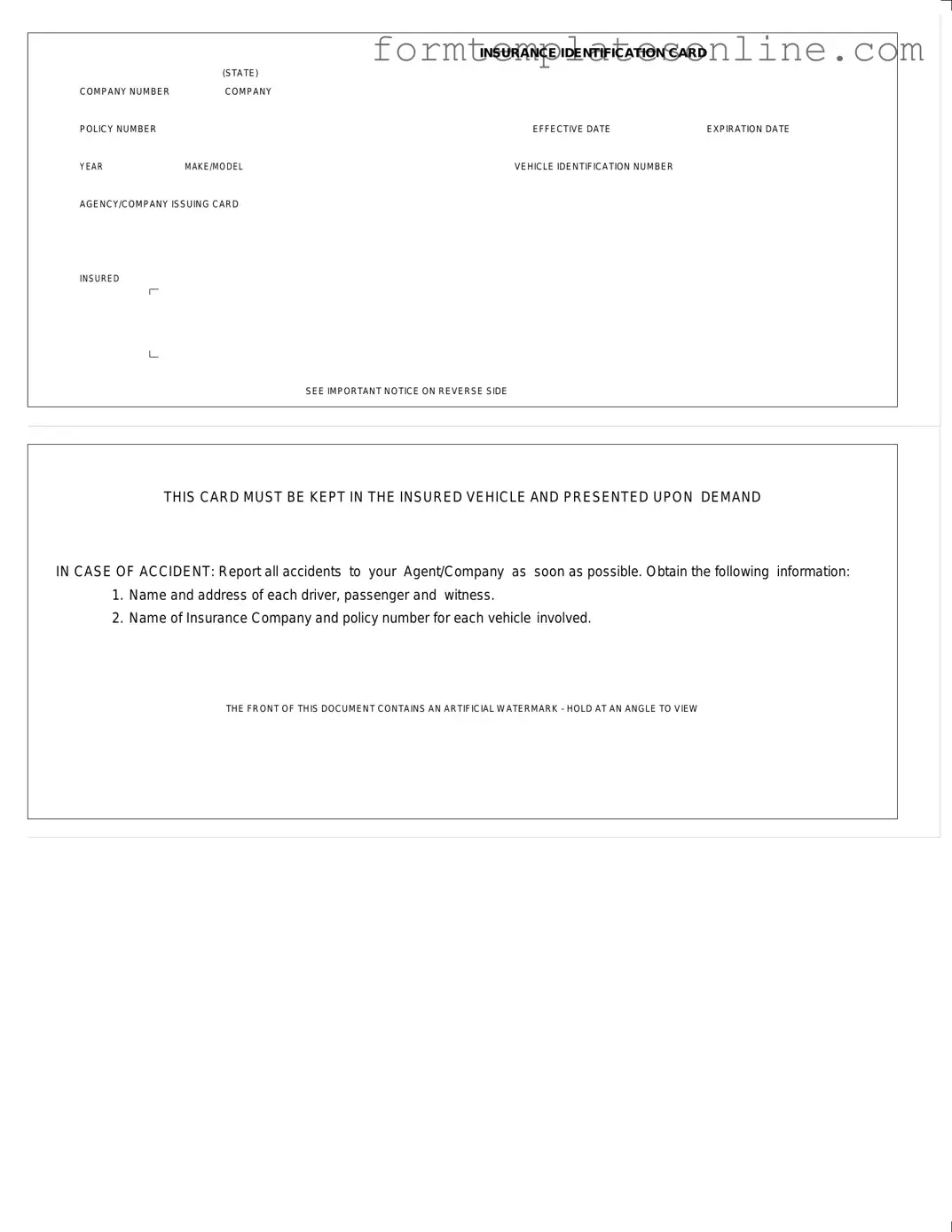What is an Auto Insurance Card?
An Auto Insurance Card is a document that proves you have valid car insurance. It includes essential information such as your insurance company’s name, your policy number, the effective and expiration dates of your coverage, and details about your vehicle, including its make, model, and Vehicle Identification Number (VIN). This card is crucial for legal compliance and must be kept in your vehicle at all times.
Why is it important to keep the Auto Insurance Card in the vehicle?
Keeping the Auto Insurance Card in your vehicle is important because it serves as proof of insurance when required. If you are involved in an accident or stopped by law enforcement, you must present this card upon demand. Failing to provide proof of insurance can lead to fines or other legal consequences. Therefore, having it readily accessible ensures you are prepared for any situation on the road.
What should I do if I lose my Auto Insurance Card?
If you lose your Auto Insurance Card, it is essential to contact your insurance company or agent as soon as possible. They can issue a replacement card, which you can often receive digitally or by mail. It is advisable to keep a digital copy on your phone as a backup while you wait for the new card to arrive. Always ensure that you have proof of insurance readily available to avoid potential issues while driving.
What information is required on the Auto Insurance Card?
The Auto Insurance Card must include several key pieces of information. This includes the name of the insurance company, your policy number, the effective and expiration dates of your coverage, and details about your vehicle, such as the make, model, and VIN. Additionally, the card may indicate the agency or company that issued it. This information is vital for verifying your insurance status.
What should I do if I get into an accident?
If you are involved in an accident, the first step is to ensure everyone's safety. After that, you must report the accident to your insurance agent or company as soon as possible. Collect relevant information, including the names and addresses of all drivers, passengers, and witnesses. Additionally, gather the insurance details of all vehicles involved. This information will be necessary for filing a claim and ensuring a smooth resolution to the incident.

